|
We're pleased to welcome Guild Certified Feldenkrais Practitioner Betsy Snyder to Move2Center Studio for a new series, Awareness Through Movement!
Move2Center is presenting Betsy's classes in response to multiple community requests for a Feldenkrais class, and we so happy that she's available to share her skill and talent with us. With its focus on presence and self awareness, the Feldenkrais Method is one of the disciplines that comprise the Nia Technique. An Awareness Through Movement lesson is an opportunity to observe yourself and how you move through life, and to offer the possibility of more kindness, gentleness, power and efficiency to your dance. Classes are held at 9am on Tuesdays beginning January 14, 2020. Included with all 5 Class Passes and Unlimited Memberships. This class will not involve a cardio workout the way the a Nia class does, so you can wear comfortable everyday clothing that’s OK for getting up and down off the floor. ATM lessons involve several periods of rest, which is required for the brain to assimilate new information. Many students find ATM classes informative and relaxing, and continue to ‘digest’ what they’ve learned as they move back into their everyday activities. All walks of life and all fitness levels welcome. What to expect in an "Awareness Through Movement" class In this class series, we will begin on the floor exploring some developmental movements to clarify our relationship to the ground. We will explore our relationship to gravity, the way we breathe, how we think and talk internally to ourselves, and how the quality of our movement is affected by all these factors. More about "Awareness Through Movement" as a practice This is gentle yet challenging practice developed by Moshe Feldenkrais, a scholar, athlete, martial artist, and author who taught his method to thousands of students until his passing in 1984. In a typical Awareness Through Movement lesson (or ATM for short), we begin with simple, gentle movements that stay within the range of ease and comfort. Instead of ‘stretching’ like we do in yoga or some other practices, we explore what muscular or mental holding we can let go of, to widen and expand our range of ease. The ‘workout’ that happens in an ATM is primarily in the brain, since we’re using intentional movement to clarify our brain's image of the body, often referred to as the self image. The clearer our self image, the more we can move and live in alignment with our intentions, and the more we can do as we want to do. By Juliann Taube I dance because I have to. I am a dancer. I was born a dancer. I filter my experience through that lens, and I express myself though movement. My family are all different from each other. But each one of them has something. They ARE something. And they filter their experience through that lens. They express themselves differently because of what they are and what their “thing” is. But we are still family. We have a shared existence and a shared experience, with different filters, and different outcomes. Each one of us has something that we do because we have to. I dance. I am happy and I dance. I am angry and I dance. I am grieving and I dance. I am alive and I dance. I had a very difficult phone conversation with my Dad, the result of which has altered our family’s dynamic in such a way that the future of our family as a unit is uncertain. I hung up the phone. I cried. And then I danced Dragon. In my living room. Crying. Living. Sensing. Dancing my life, my experience, my tears. I filtered my emotions through dance. I danced my life with Dragon and it all came to the surface. My legacy, my family, my experience blended with Britta’s life and her experience that lead to her body of work, Dragon. The result was perfect and transcendent and something new altogether. What do you filter your life through? What makes sense to you when other things don’t? What have you discovered and what have you made when you came from your truth, your dance, your very own “thing?” Have you ever wanted to slow down and sense the healing mindfulness in your movement? This is the purpose of Nia Technique's Moving to Heal. And in the coming weeks, Move2Center is delighted to host a Moving to Heal series facilitated by Black Belt Nia teacher Jeanna Wheeler.
When: Fridays at 5:45 p.m. until 7 p.m. on August 23 and 30, Sept 13, 20 and 27. What to expect: Enjoy music and easy-to-follow choreography in a supportive atmosphere of safety and trust, slowing down to focus on pleasure, and feeling better. Classes are designed to meet the needs of those diagnosed with long-term or chronic illness, mobility limitations as well as individuals with short-term personal healing goals for body, mind and emotions. Nia Moving to Heal can be done standing, sitting in a chair, or some combination of both. Beginners are welcome. Fee: $18 drop-in plus tax. Also included with your 5-class pass and unlimited memberships. “True yoga is not about the shape of your body, but the shape of your life.” -- Aadil Palkhivala
Welcome to Yoga at its most welcoming and inviting! Susan Westlund returns with her Hatha Yoga classes starting on October 11. The idea is to give new and returning yogis a chance to get a taste of the various forms yoga can take. Each week we’ll offer a different style of yoga, beginning with a gentle class where we will share an overview of class structure and the language used in most all yoga classes regardless of who teaches them or where they are offered. Although we encourage you to join us for the entire series, it is not required. You may pick and choose those that most appeal to you or that fit into your schedule. Before we get into that, just know this: You don’t have to be a pretzel to practice yoga! Yogis come in all shapes and sizes. More that 2,000 years old, yoga has guided all sorts of practitioners to greater health, clarity and joy through self-discovery. It is an inward practice that helps us learn to recognize and change our habits, to appreciate and enjoy our being. It is non-competitive and non-judgmental. We use our breath and body sense to guide us throughout our practice and become more skillful in our everyday lives. The classes are listed below and are included in your Five Class Pass or Unlimited Membership. The usual drop in fee of $18 (plus tax) also applies. Week One--Intro to Yoga: This gentle Hatha class will offer brief explanations of the benefits and origins of yoga, how it differs from other physical practices as well as what to expect in most any yoga class. Please bring your questions! The class is designed to help you to select and be ready for yoga classes anywhere. Requirements: Dress comfortably with an open heart and curiosity on your sleeve. Week Two--Gentle Yoga: Takes a gentle approach to slow, centering stretches. Links the breath to slow, simple movements. Builds flexibility, increases range of motion and body awareness. Ideal for new and continuing students—anyone who wants to find calm and feel more ease in their body. Week Three--Flow/Vinyasa Yoga: Moves with the breath in a dynamic flow of postures that build heat, stretch and strengthen the body. Pace is slow to moderate to allow for proper alignment and mindful transitions. Sun salutations, standing poses and balances central to the flow but seated and reclining postures also come into play before easing into restorative svasana. Step-by-step guidance includes variations that help you dial back more challenging postures deepen and extend them. Week Four--Power Yoga: Strengthens and stabilizes through standing and weight-bearing poses for ALL LEVELS of yogis. Longer holds are used to build muscle and increase stamina, but a balanced practice that includes movement, flexibility, and breath-oriented mindfulness remains the hallmark of this and all yoga classes. Variations on the poses make this a super-accessible class! Week Five--Yin Yoga: Opens and stimulates the fascia and core connective tissue by holding moderate stretches for longer-than-usual times, sometimes for several minutes. Calms the mind and encourages a sense of well-being through mindful breathing. Complements sports’ activities, aerobic exercises and the more “yang” style dynamic yoga practices. Generally targets the connective tissues of the hips, pelvis, and lower spine. Suitable for beginners as well as experienced yogis. Week Six--Restorative Yoga: Supports deep rest. Holds nurturing poses effortlessly for long periods, allowing the body and mind to let go and relax. Steady, deep breathing and slow, deliberate transitions maintain the calming, restorative effects of the “relaxation response.” Blocks, bolsters, and straps are often used as supports, allowing the body to remain in the postures without effort. This practice benefits all who can use a little relaxation. Week Seven--Partner Yoga: Adds a playful twist to postures and flows. Levity and laughter accompany pairs trying to keep their rocky boat poses afloat or finding their roots in tottering tree poses. Forward bends and backbends deepen in the press and pull of a partner. Connections with the Self and Other are brought into focus with mirrored movement and breathing. The general name for the physical practice is Hatha yoga, the umbrella under which the various styles of yoga exercise classes fall. That said, when a class is listed on a yoga schedule as Hatha, it will generally include elements of more specified styles and approaches. It will generally be slow to moderately paced and will have modifications for beginners through more experienced yogis. Hatha yoga includes both yin and yang--or restorative and dynamic--aspects of the practice. Slow to moderately paced flows with modifications for beginners as well as more experienced yogis. Sun salutations and standing poses, seated and reclining postures, as well as a variety of twists, balances and inversions will be introduced. Yoga exercise classes differ from other forms of exercise primarily by the intentional focus on the breath. A full class of any style will generally include forward bends, backbends, twists, inversions, balances, stretches and strength building poses even if they are done in subtle--or very gentle--forms. By Melanie
Using breath as healing and centering device did not always come naturally to me. It took a long time, in fact, for me to weave mindful breathing throughout my practice -- not merely exhaling into kicks, blocks and punches, but finding the rhythm and flow throughout the dance arts as well. Now I end every class with a bit of focused inhalation and exhalation to help coax myself and students more deeply into relaxation and FloorPlay and to return to center before stepping out. More than this, however, I'm a huge proponent of maintaining that practice throughout the day. It's one of the easiest means of remaining fully embodied in each moment, and bringing ease to each action. And breath is central to mind-body wellness, playing a key role in centering our emotions and calming spirit. Yoga masters and martial artists have long touted the importance of mindful breathing. But as of 2018, thanks to researchers at Trinity College Dublin, we now have scientific data that explains the neurophysiological link between cognition and breath. Every inhalation and exhalation directly affects the levels of noradrenaline, a natural chemical messenger in the brain released when we are challenged, curious, focused or emotionally aroused. It's brain food. So when we set our Focus and Intent at the start of each Nia class, that begins the process of teasing forth more of that lovely brain food. Once we step in, warm up and get moving, breath helps to keep producing that noradrenaline enabling the brain grow new connections. So in the same way that exploring a routine through movement challenges our neural mapping, being mindful about the way we breathe through each moment and positively shift the chemistry of our brains. Breath increases one's ability to focus on sensation, augmenting positive emotions along the way in addition to decreasing emotional reactivity. Another way of putting it is, if I feel energized and uplifted after class, that's not simply due the music, movement and magic. How I breathe plays a role in that sensation. So through each class, when an instructor invites you to pay attention to a sensation -- to a body part, or a feeling -- start with your breath. Even long after you've stepped out of class set a few minutes aside for yourself to breathe in, fully and deeply, and release. If you want more, consider building a practice. Click here to read exercises created by Dr. Andrew Weil. The brain and body will thank you for it! By Emily Freebairn
Before Nia, dancing made me uncomfortable. I was awkward and vulnerable on the dance floor, and sure that no matter what I was doing it looked wrong somehow. There didn’t seem a point to purposely displaying myself for other people to make fun of. Fortunately for me, that’s not what dancing is. And Nia taught me that. The first time I went to a Nia class, I was bewildered. I didn’t know what the different moves were, and the language was funny and seemed too woo-woo. The floor was “ground”, and “earth”, and how on earth was I supposed to smell the moment? But even while my mind was picking holes and looking for reasons not to come back, my body was experiencing something new and treasured for the first time. I left that class feeling elated in a way I hadn’t in a long time - a buzz throughout my entire being that made me feel like I could do anything. I immediately knew I had to come back. At the same time, I had no previous frame of reference for this wild joy that left me skipping out of class. I’d heard “endorphins make you happy”, but I’d exercised before and hated it. I’d danced before and at best I’d been relieved no one had outwardly laughed at me. How was Nia so different? Before Nia, I thought of my body as a tool - something that did what I told it to do the same way every time. I didn’t listen to my body because exercising was painful. Nia’s concept of “Your Body’s Way” - the idea that my body was different from day to day - was a quiet revelation to me. It made me curious about my body. Instead of a tool, my body was fluid, changing moment to moment. A kick one day might feel fantastic; the next class my hip might be sore. Of course I needed to pay attention to my body - how else was I supposed to know what it could do? In Nia, there’s a give and take. Every time the teacher says “sense your ____” is an opportunity to check in with my body and sense where it wants to move, what parts are stuck and need some extra love. I learn to get out of my head and trust that my body’s experiences are valid. No judgement, no stories about how I’m getting older, my desk job is finally getting to me. Just acceptance, and a growing awareness of my body’s sensations. My body has a voice, and I need to listen to know what is needed. Nia helps remind me I’m not a floating brain case - living is a full body experience. During my White Belt, my trainer Jill Pagano called the body sacred, where sacred is defined as “being entirely devoted to something”. My body is sacred, because it exists solely for me. It is the filter through which I experience everything. My body knows things in a way my mind can’t articulate, and when I listen, and dance, I learn. Nia has helped me deepen my relationship with my body and broadened my experiences of body, emotion, and imagination. My body is an integral part of my life. I cherish the times I get to explore it and understand it more fully. By Melanie
One of the stories I love to tell people when they ask about Nia is that when I took my first class, I couldn’t turn. This surprised me. In Nia, we move through a turn based on the energy of Aikido, inviting in ease and stability in the base and coaxing forth mobility from the hip joints. If one is experiencing tightness through the hips - which can be common among people going through emotional difficulty - turning can be difficult. For me, in that introduction to Nia, it was impossible. It’s one of the reasons that, after class, I went home and had a cathartic ugly cry in my shower. It’s not the only reason, let’s be clear. My life at that time – this is a decade ago – might as well have been a broken glass bowl. Here’s what I mean by that: Imagine you’ve created this perfect vessel. It is symmetrical, elegant, shiny. You display it proudly in your hands. Onlookers admire it. And then a random event/object/elemental burst/whatever, you name it, hits you and knocks you off balance. The vessel you worked so very hard to create, to perfect, tumbles out of your hands and shatters at your feet. The sonic burst of its destruction rips the air with a high-pitched and cruelly clumsy “clang!” that may sing in your memory for months, for years. What do you do? Do you sweep it up and start over, as much as the loss may break your heart? I did not do that. Nope! I tried to piece my beautiful life back together just the way it was. I tried to reconstruct the impossibly devastated with inadequate tools, tried to remake the vessel out of its splinters with child-friendly paste and gum and fraying recycled thread. To borrow a line from one of my favorite TV series, I tried to make burnt toast bread again. That is a recipe for disappointment and frustration and depression. And, yes, anger. What does this have to do with Nia? Simple – that class provided the first tool in what became a growing box of them. I decided I wanted to turn, because I used to be able to dance. I saw other people turning. Why couldn't I? I signed up for more classes to find the answer which ultimately was, "Oh yeah - I can. I just needed to figure out how, again." This leads me to another story I tell people who ask me about Nia, and specifically whether they can do it. “I’d love to dance, but I can’t, is that a problem?” That's a popular one. (And no, it's not a problem. Nia is, in fact, terrific for people who think they can't dance.) Another is “I haven’t exercised in forever!” I understand. Neither had I, when I first came to the practice, when I couldn't turn. I was out of breath. I kept dancing. I felt better, stronger, more energetic. Positive, for once. Then I decided to take the White Belt Training and, wow. That gave me a whole new set of tools. I tell people, the fact that I teach Nia is evidence that anyone can do this. Nia is a tool for discovering a new relationship with our bodies, and with wellness. Not only that, it provides lessons in living and communicating better and turning into the next step of newness, into more than what was. I teach because I love sharing that joy and adventure, and I love being surprised and amazed and yes, at times befuddled and even frustrated, at the movement presented in new routines. I teach Nia and take classes from other Nia teachers because it is a sustainable practice, one that I know I can and will play with and learn from for the rest of my life. I can turn now. I love turning, which is one of the reasons I’m loving my return to the routine Birth this week. There’s a lot of turning in Birth, including turns in low plane that I couldn’t execute when I first taught it in a gym some years ago. There are also strengthening opportunities in FloorPlay that I can enjoy now that I couldn’t do a few years ago – again, as a teacher. I lacked the strength and the coordination back then. But I kept going. I persisted. Oh yes I did. It brings me joy to say that I am physically stronger now thanks to the lessons within this practice. Even more joyfully, I can say that I now know building upon that sensation is always possible. There is always opportunity to turn into more. In the process of connecting more deeply with Nia, I’ve constructed a new vessel that is my life. The vessel is not unbreakable; the impermanence of existence makes that impossible. But it is malleable. It leaves room for change, a constant. It can take on different shapes. It has the capacity to grow larger, hold countless new ideas, to float through explorations of the realms of mind, body, emotion and spirit. We can all turn, in our own way. We all have these tools in our hands. What beautiful vessels will you create for yourself and your life? I can’t wait to see. Want to know more about Nia? Join us for our Intro to Nia class on Friday, September 21 at 6 p.m. Ready for a deeper dive into the practice? Sign up for a White Belt Intensive with trainer Britta Von Tagen. By Christina Kemp
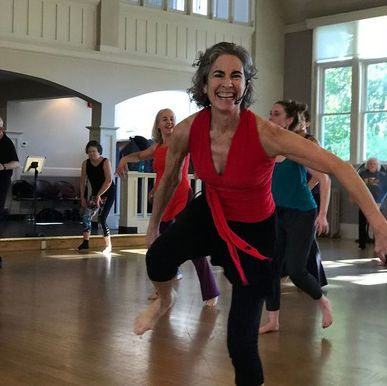 Some of us require gentler ways to keep moving while developing balance, strength and mobility. To serve this purpose, Nia Technique has developed a modality known as Moving to Heal. And this summer at Move2Center we're delighted to host a Moving to Heal series featuring certified Nia Naomi Scher! When: Tuesdays at noon starting July 3 through August 28 What to expect: Enjoy music and easy-to-follow choreography in a supportive atmosphere of safety and trust. You will be invited to personalize movements to fit your body’s way, while focusing on pleasure, resulting in improved overall feelings of wellness, regardless of current physical/medical condition. Classes are designed to meet the needs of those diagnosed with long-term or chronic illness, mobility limitations as well as individuals with short-term personal healing goals for body, mind and emotions. Nia Moving to Heal can be done standing, sitting in a chair, or some combination of both. Beginners are welcome. Fee: $18 drop-in. Also included with your 5-class pass and unlimited memberships. Click here to reserve your spot in class!  "The complexity and subtlety of this inner world is vast, infinite and ultimately wordless." -- Vajra Ma My first contact with the “Dance” was a talent show of sorts with a small gathering of friends in 2004. I witnessed four women moving in a way I had never seen before. Evocative, rhythmic music filled the space... but they were not dancing to the music. Their movements were subterranean, extremely slow, serpentine and fluid. Delicately each woman, with sinuous spines and unique in her expression, explored the space with exquisite awareness. Then, in unison, they walked toward the audience in that very, very slow manner like four willows in the wind. The effect was visceral. My spine came alive and my heartbeat quickened. Energy moved up into my throat and tears spilled down my face as this wave of feminine grace and power wafted through me. Though new to me, something ancient and familiar stirred. I was captured by Beauty. In that moment I knew in my body and soul that I was called to dive into this mysterious Dance. I chose to call it the "Deep Feminine" because in my experience of the practice, that the well of wisdom and beauty that springs forth from within is bottomless. If you are a Nia student or Nia teacher you may have heard me say that Nia and the Dance of the Deep Feminine go hand in glove. They are stand-alone movement modalities and they complement one another greatly. Here a few of the ways: 1) Nia and the Dance are both based on the pleasure principle. We learn through pleasure instead of pain and crisis, always tweaking to move towards what feels good in our body. 2) In Nia we talk about being Sensation Scientists where through giving our attention to sensation in the body we begin to develop body literacy. Sensation is the language of the Body. It is a continuous exploration and an awareness that develops with practice over time. This is also Principle #5 of the White Belt: Awareness. 3)The heart and soul of Nia is The Joy of Movement and this holds true for the Dance as well. 4) In the Dance you will recognize a couple of the principles from The Body's Way, namely #4: the body demands simultaneous mobility and stability. And #5: the body itself reveals the body's way. 5)Slowing down in order to move to heal. 6) Moving the core of the body: pelvis, chest and head with an emphasis on the spine and intrinsic movement. 7) Exploring the 3 M's: Music, Movement and Magic. And for the Dance I will add a fourth: Mystery! How Ann Came to the Dance My experience of witnessing the Dance as part of a performance is, I think, not typical. Generally one attends a workshop, class or private session with an experienced Tantric dance teacher. I began my journey of private sessions and classes with my teacher/mentor Karin Pedersen in Ashland, Oregon, and also occasional workshops with Vajra Ma in Grants Pass Oregon. There were a lot of road trips to southern Oregon in those early years of my study. After sponsoring Karin to come to Seattle several times for workshops on the Dance of the Deep Feminine it was time to start facilitating classes of my own. So, what is this Dance? Originating in Tantric traditions, the Dance is a sensual moving meditation that taps into the womb-sourced portal to explore our deepest feminine essence. In the words of Vajra Ma, "No dance experience is necessary. Every woman embodies this power and wisdom; she only needs to feel herself deeply enough." As women, we hold a universal truth that cannot be understood through the mind. To embody your feminine wisdom it must be awakened through your womb as a second "brain". Tapping into the mysterious fluid rhythms of your unique feminine essence, this movement allows for an effortless flow of energy leaving one feeling more sensuous and alive. Pleasure is the portal. In my years of studying and teaching the Dance the gifts have been many. It along with Nia has brought me home to my body, integrating inner beauty with outer beauty. There is the joy of knowing at a cellular level that beauty is not about shape. In witnessing, in myself and others, the healing that comes from slowing down. Our nervous system requires this in order to heal from trauma. I have seen many women deepen their healing from physical and sexual abuse and the emotional injury that comes with that. It might be reclaiming the womb space after a hysterectomy or coming back into health after debilitating depression or chronic fatigue. There is great healing and power that comes from women gathering together in a safe sanctuary, to give and receive positive messages, to witness and be witnessed in the Dance of the Deep Feminine. Another gift has been experiencing the holding of opposites. From the beginning of my journey and exploration of the Dance I have experienced simultaneous familiarity and something unfamiliar and surprising. Sensation arising that is new and ancient. The tension between form and freedom. Simultaneous stability and mobility. Feeling vulnerable and powerful. It is not a matter of "either/ or." It is both. There are more parallels and intersections of Nia and the Dance of the Deep Feminine but this gives you an idea as to how very compatible and complimentary they are to one another. In describing what a Nia class is like we often say it's like attempting to describe the taste of dark chocolate, or trying to describe the color red. In other words, you really need to let your body have the experience. The same holds true for the Dance of the Deep Feminine. My hope is that this will give a little form to the formless, a few words to help create a better sense of what you can expect if you decide to join me this coming Saturday, April 28th from 6:00 to 9:30 pm. Like Nia, the Dance of the Deep Feminine is for me a love based path. Yes, the Dance is transformative and healing and let me assure you -- it is also full of sensuous delight, pleasure and empowerment! -- Ann |
Movement Meditations
Where our instructors share information and observations about what's going on at Move2Center Studio! Archives
April 2022
Categories |
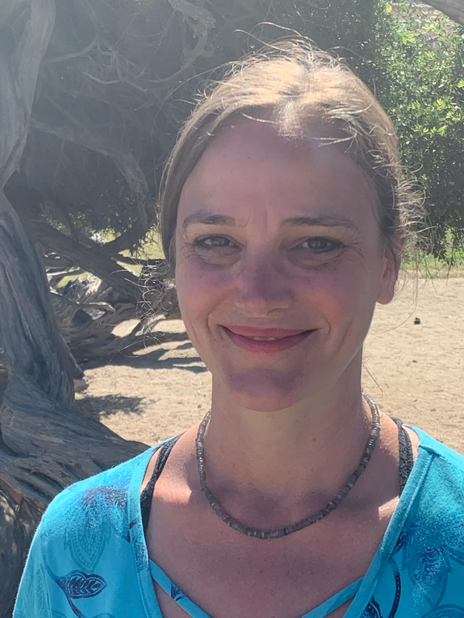
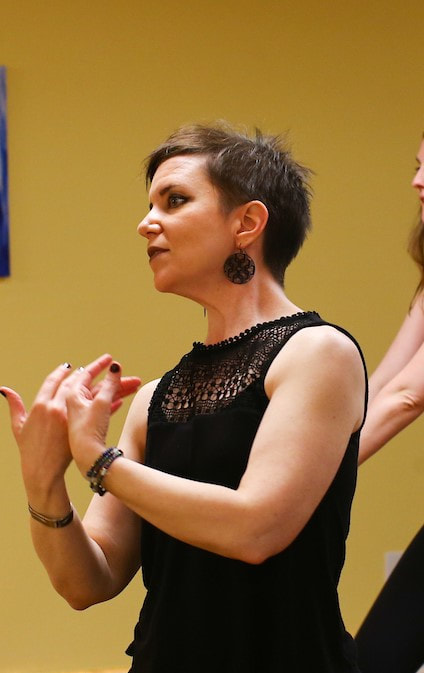
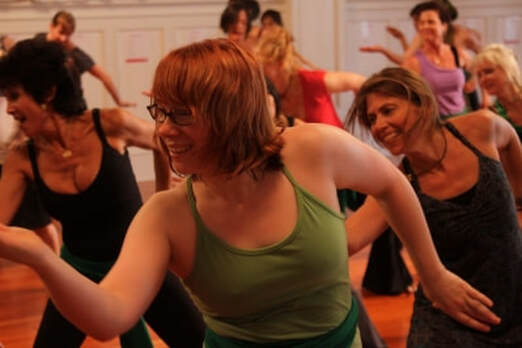
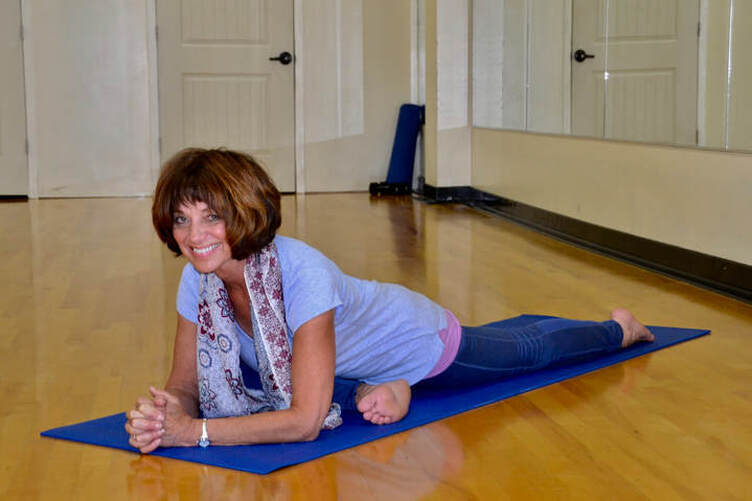
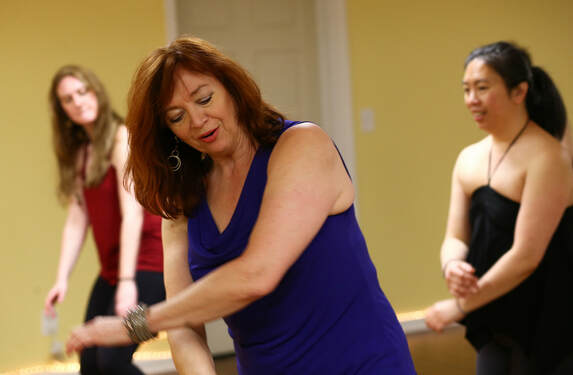
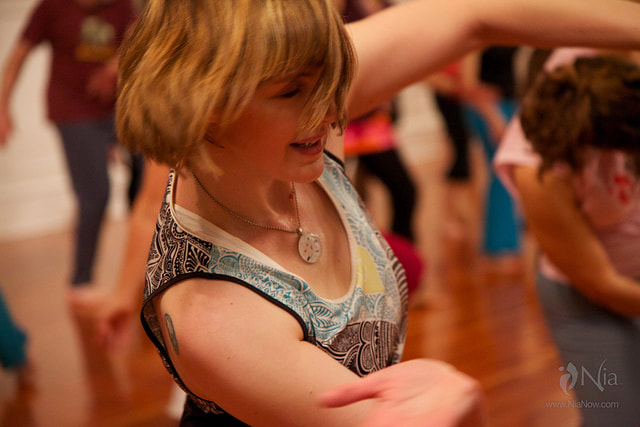
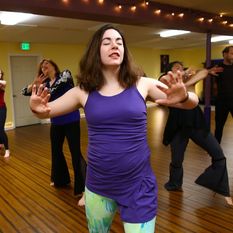

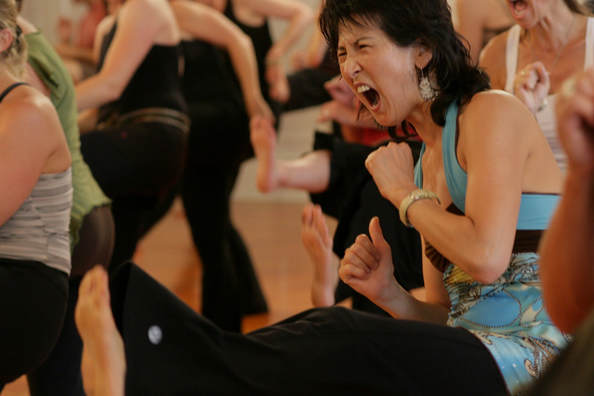
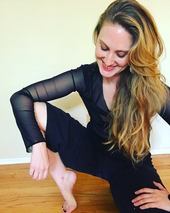
 RSS Feed
RSS Feed